Paul Laurence Dunbar High School
From 1907 to 1929, Little Rock's black students were educated at Gibbs High School. When Gibbs was partially destroyed by a fire, the Little Rock School Board chose to retain the building's undamaged portion as an elementary school and to build a new high school for black students nearby, at Wright Avenue and Ringo Street.
However, the school district's building fund had been depleted by the recent construction Little Rock High School (later known as Central High School), the school board searched for alternate sources of financing construction. Through G. DeMatt Henderson, a Little Rock attorney, the school board obtained partial funding for the new school from the Julius Rosenwald Fund. Established to help communities with the construction of public schools, the Rosenwald Fund had already assisted in the construction of many schools for black students across the United States.
The school was designed by Wittenburg and Delony on a plan similar to that of Little Rock High School—though less ornate and on a smaller scale—and cost $400,000 to build. Schools financed through the Rosenwald Fund normally followed an industrial arts curriculum, so the new Little Rock facility was initially named the Negro School of Industrial Arts. The name was soon changed to Paul Laurence Dunbar High School, to more accurately reflect the community's goals for the school. The high school operated from 1929 to 1955.
Due to Dunbar's quality reputation, students moved to Little Rock from all areas of the state to attend school there. Under John H. Lewis, the school's first principal, and his successors, William H. Martin (1943-45) and LeRoy M. Christophe (1945-55), Dunbar established a mutually supportive relationship with the local community and served as a focal point for Little Rock's African American families.
Through determination and resourcefulness, the school's faculty overcame shortages of funds and facilities to become the only black high school in Arkansas accredited by the North Central Association. The success of the school's methods may be seen in the high number of graduates who continued their education in college and became leaders in their fields
of endeavor. Additionally, many Dunbar graduates attended Dunbar Junior College, housed within the high school building, before enrolling in four-year colleges elsewhere.
As part of the Little Rock School Board's plan for gradual desegregation, Dunbar students transferred to the new Horace Mann High School in 1956. Dunbar, meanwhile, was converted into a junior high school and continued to operate in that capacity until 2009. Today, the school operates as a magnet middle school.
In 1980, the school building was admitted to the National Register of Historic Places for both its architectural design and its place in the history of African American and Arkansas education.
In 2013, the Paul Laurence Dunbar School Neighborhood Historic District was added to the National Park Service's National Register of Historic Places. This area is roughly bounded by Wright Avenue on the north, South Chester Street on the east, South Ringo Street on the west and West 24th Street on the south.
